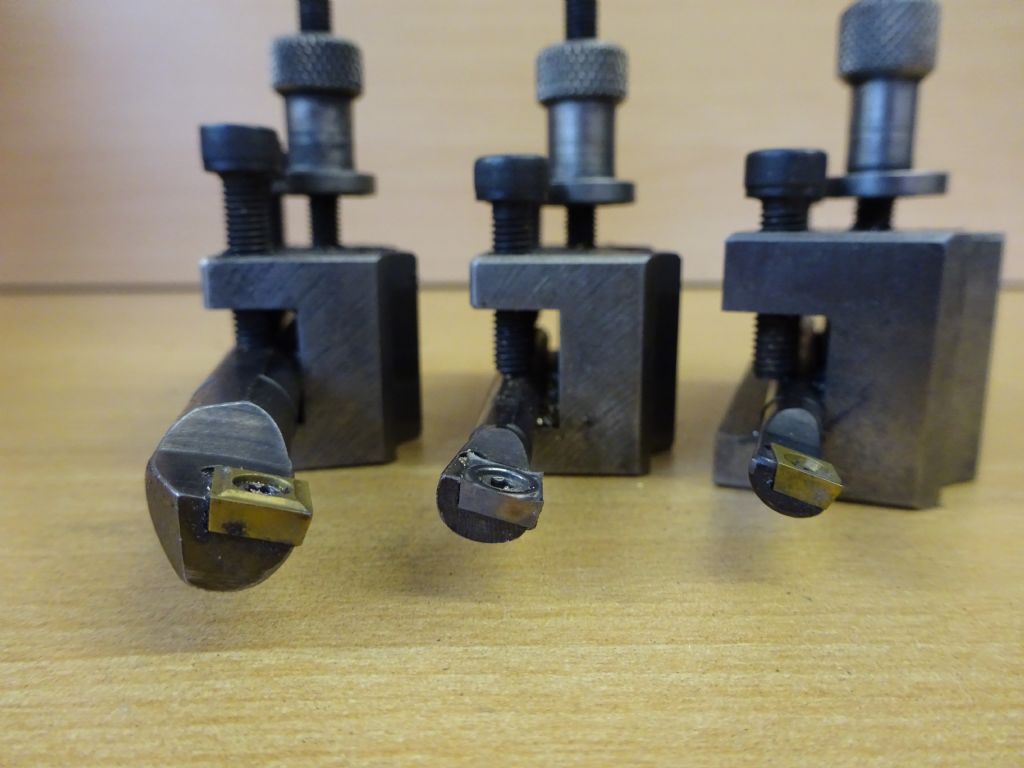Posted by JasonB on 21/06/2017 11:56:03:
Interesting advice Ketan, I have a box of 0.8r tips and seldom use them, they only come out of the box if I want a small internal radius when turning to a shoulder. The rest of the time I tend to use 0.4 or 0.2, one reason s that on slender work I find the larger tip tends to push the work away and give a bad finish.
J
Hi Jason,
You are special 
Joking aside, you have good experience of using indexable carbide tooling, on your machine, combined with a clear understanding of your machines ability and rigidity.
Before considering to sell any carbide insert based lathe tools, I had a list of questions for the technical sales guy from Sumitomo.
NOTE: I am a fan of HSS tooling over carbide for general use on hobby or manual machines in a hobby environment. High speeds experimenting or use with carbide on such machines scares me, but that would be due to lack of experience.
The questions came out of observations at the shows we attended. At the shows, debates were had on HSS vs carbide. For carbide stuff, I used to direct enquirers to Jenni – JB Tools who I consider to be great for this stuff. However time and again, a certain percentage of users would come back to me with comments of disappointment after buying stuff from her. Something failed to add up. As far as I was concerned, JB Tools could not have been at fault.
I raised these points at that time with the Sumitomo guy some seven to eight years ago. This guy went on technical sales visits to factories around the U.K. offering solutions to the users. He explained:
1. Generally inserts are designed for use with CNC machines working at speeds which are much higher then the manual machines with which we work.
2. With manual machines, for general use, people buying stuff off Jennie may have purchased inserts less than 0.4r… If so, the probability of such inserts chipping or failing to give them a suitable result are high on manual machines, because most manual machines just don't have the rigidity to use fine radius inserts.
3. Combine point 2 with user ability and experience. He came across this during factory visits. Such users still wished to use carbide stuff. So, he suggested 0.4r for finer finishes, and 0.8r for general use, provided such machines were rigid enough, especially at higher speeds, be it the tool post or the headstock assembly.
4. For boring tools, i have put across what he told me. Also, he said that the fact that a boring tool holder is long, does not necessarily mean that it can extend out of the tool post at great length, without having a compromising effect – flex or vibration. Same comment applied to normal square holders.
So, I believe that the answer is more complex due to the variables involved. Having visited the factory where the inserts are made, they are 'state-of-the art' with Swiss machines, and so clean that you can eat off the floor!.
So variables: holder?, insert?, machine toolpost/headstock?, user ability?
Ketan at ARC.
Douglas Johnston.





